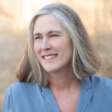
Giving employees a voice at DHS
The past couple of years have seen tectonic changes in the work force; both from the perspective of employers and employees. COVID-19 and the quarantine saw a work...
The past couple of years have seen tectonic changes in the work force; both from the perspective of employers and employees. COVID-19 and the quarantine saw a work force that was already moving towards flexible schedules move to telework and remote work. Now, those changes are becoming the norm.
Nowhere was the change more obvious than in the federal work force.
“The pandemic gave us a lot of lessons learned that we have really moved the human capital community, we’ve moved our customer experience and, and quite frankly, understanding what our employees need and wanting to be able to support them,” said Roland Edwards, the chief human capital officer at the Department of Homeland Security during an interview with Federal Monthly Insights – Employee Experience.
While in most cases, workers are now able to return to their offices, the option of flexible work environments combined with a tight job market meant employers have had a new mandate to listen to employees needs and offer incentives to make more attractive job offers. Edwards said since the pandemic, DHS has learned to accommodate all different kinds of scenarios, depending on the nature of individual jobs.
“We’ve learned that it creates a greater work life balance for our employees to allow these flexibilities. So whether it’s remote work, whether it’s being able to be more of a remote worker but in the local commuting area, or whether it’s to be able to use telework, where you’re still coming in part of the time because your job may require you to be have an in-person presence”, Edwards said on the Federal Drive with Tom Temin.
Aside from flexible work schedules or being able work remotely, Edwards emphasized keeping DHS employees connected as an agency and as a team. Given the challenges of a large agency with various different teams under its umbrella in different geographical places and different types of work, Edwards said it can be challenging to maintain connectedness.
“So how do we make sure that new employees who are coming on board, that they continue to feel this connectedness when they’re coming in and are connected, not just to the mission, but connected to a group of people that they know that they can call on that they can rely on that they can ask questions, so that they feel like they are now a part of the organization,” Edwards said.
He said that the agency revamped their onboarding process to accommodate employees who may not be in the office every day. Some education and communication is done through group calls and webinars. Sometimes, connecting can mean sending top DHS officials out to physically meet with their far-flung employees.
“Our secretary and our deputy secretary often go out and have these conversations in the regions. And so they don’t bring people here, they go out to people. And so there are a lot of topics that come up during those sessions, we have focus group sessions that we’ve been leading from the human capital side that, again, generates quite a few ideas. And we bring those back and we act upon those,” Edwards said.
One area that has been critical over the past couple of years is health and wellness programs for employees in the form of employee assistance programs. While they can take a variety of forms, Edwards said they need to be tailored to the specific needs of the community.
“We’re really doing our best to have programs in place that support our leaders down to the local level, because it’s not just the programs that are involved, but it’s the employees’ abilities to actually participate in those programs,” Edwards said.
Copyright © 2025 Federal News Network. All rights reserved. This website is not intended for users located within the European Economic Area.
Alexandra Lohr, a former staff member, covered the Defense Department for Federal News Network until September 2023.
Related Stories




